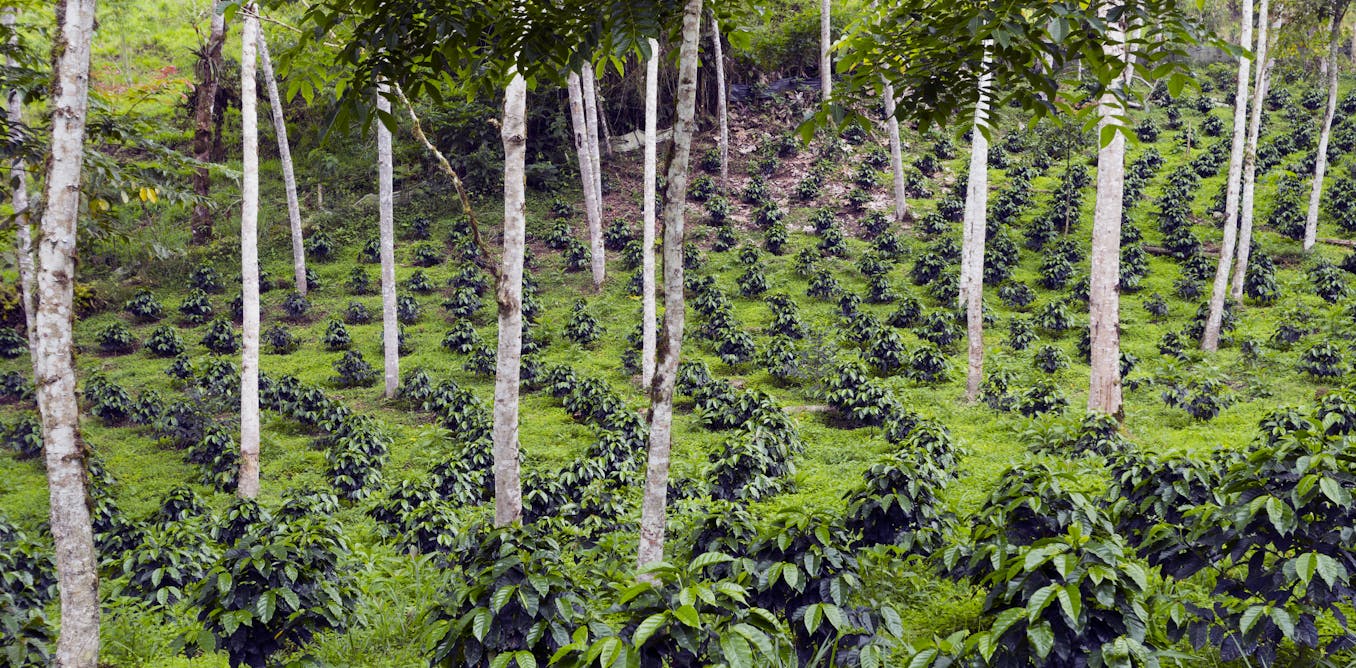Agroforestry Integrating Trees For Sustainable Agriculture
Agroforestry at 40: How Tree-Farm Science Has Changed the World
Agroforestry is an agricultural technique that involves the intentional integration of trees and shrubs into farming systems. It has been practiced for centuries in various parts of the world and has proven to be beneficial for both farmers and the environment. This article explores the remarkable impact of agroforestry on modern agriculture and the significant changes it has brought about globally.

Over the past four decades, the science behind tree-farm integration has evolved and improved, leading to increased recognition and adoption of agroforestry practices. Today, agroforestry is not only considered as an effective tool for sustainable land management but also as a means to address critical global challenges such as climate change, biodiversity loss, and food security.
Agroforestry systems are diverse and adaptable to different environments, making them suitable for implementation across various regions. They offer numerous advantages compared to conventional farming methods, making them an ideal choice for small-scale farmers and large-scale agricultural operations alike.
What is truly remarkable about agroforestry is its ability to enhance both agricultural productivity and environmental sustainability simultaneously. Unlike monoculture farming, where a single crop is cultivated, agroforestry creates a multi-layered system that maximizes land utilization and allows for efficient resource utilization. The intercropping of trees with crops provides numerous benefits such as improved soil health, increased water retention, reduced erosion, and enhanced biodiversity.
Some Ideas For Implementing Agroforestry:
- 1. Alley Cropping: Planting crops in between rows of trees.
- 2. Silvopasture: Integrating trees into livestock grazing areas.
- 3. Windbreaks: Creating barriers of trees to minimize wind erosion.
- 4. Riparian Buffer Zones: Planting trees along rivers and streams to prevent soil erosion and nutrient runoff.
- 5. Home Gardens: Incorporating trees and shrubs into residential areas.
These are just a few examples of how agroforestry can be implemented. The specific techniques and practices depend on the local climate, soil conditions, and the goals of the farmers or land managers.
Recommendations For Successful Agroforestry Practices:
- 1. Community Engagement: Involving local communities in the planning and implementation of agroforestry projects ensures their long-term sustainability.
- 2. Knowledge Sharing: Providing farmers with access to information and training on agroforestry practices can enhance their understanding and adoption of the techniques.
- 3. Policy Support: Governments and organizations should recognize and support agroforestry through policies and financial incentives to encourage widespread adoption.
- 4. Research and Development: Continued research and innovation in the field are crucial for further improving agroforestry practices and their integration into existing farming systems.
- 5. Capacity Building: Investing in the development of technical skills and knowledge among farmers and extension workers can promote the successful implementation of agroforestry.
The adoption of agroforestry practices can bring about a range of benefits. From an environmental perspective, agroforestry helps mitigate climate change by sequestering carbon dioxide through the increased tree cover. It also promotes biodiversity by providing habitats for numerous species of plants, animals, and microorganisms.
From an economic standpoint, agroforestry offers diversified income streams for farmers. The combination of tree crops, cash crops, and livestock provides multiple sources of revenue throughout the year, reducing their vulnerability to market fluctuations and climate-related risks.
A Listicle of Key Advantages of Agroforestry:
- 1. Improved Soil Health: The presence of trees helps prevent soil erosion, enhances nutrient cycling, and improves fertility.
- 2. Increased Crop Yields: Agroforestry systems often result in higher yields due to optimized resource utilization and reduced competition between crops.
- 3. Climate Change Resilience: Tree cover helps regulate microclimates, reducing temperature extremes and enhancing moisture retention.
- 4. Enhanced Water Management: The root systems of trees aid in water infiltration and reduce surface runoff, contributing to improved water availability.
- 5. Sustainable Livelihoods: Agroforestry provides income diversification and improved resilience to farmers, especially in challenging environments.
- 6. Reduced Chemical Inputs: The integration of trees can help reduce the need for synthetic fertilizers and pesticides, promoting sustainable farming practices.
Question & Answer:
Q: Can agroforestry be implemented on large commercial farms?
A: Absolutely! Agroforestry is scalable and can be tailored to suit the needs of both small-scale farmers and large commercial farms. It offers opportunities for improved land management, enhanced productivity, and sustainable agricultural practices, regardless of the farm size.
Q: Why is agroforestry important for food security?
A: Agroforestry plays a vital role in ensuring food security by diversifying farm output and reducing reliance on single crops. The integration of trees and crops in agroforestry systems helps stabilize yields, enhances nutrient cycling, and protects against pests and diseases.
Summary of Agroforestry's Impact:
Agroforestry has come a long way in the past 40 years, evolving from a traditional practice to a scientifically recognized and globally adopted agricultural approach. With its ability to support sustainable land management, mitigate climate change, promote biodiversity, and ensure food security, agroforestry is contributing significantly to a more resilient and sustainable future.
As we continue to face numerous environmental and societal challenges, the integration of trees and agriculture offers a promising solution. Agroforestry is not only transforming our farming systems but also changing the way we perceive and approach land management.
By embracing agroforestry and its principles, we can create a harmonious and sustainable balance between agricultural productivity and environmental stewardship. Let's celebrate the remarkable progress that agroforestry has made over the past four decades and recognize its potential to shape the future of farming.
References:
- Smith, Pete, et al. "How much land-based greenhouse gas mitigation can be achieved without compromising food security and environmental goals?." Global Change Biology 19.8 (2013): 2285-2302.
- Lin, B.B., et al. "Agricultural biodiversity and livelihoods." Annu. Rev. Environ. Resour. 42 (2017): 317-346.
- Nair, P.K.R. "An introduction to agroforestry." Springer Science & Business Media, 2012.
Post a Comment for "Agroforestry Integrating Trees For Sustainable Agriculture"